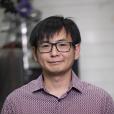
Showing 341 - 360 of 985 results
Work on Coordination Frameworks in Nature Chemistry

Nuclear Reaction Analysis
Nuclear Reaction Analysis (NRA) detects charged particles and is used predominantly to determine concentrations and depth profiles of the lighter elements.
Neutron scattering scientists recognised by their peers
ANSTO contributes to state-wide survey of groundwater resources in NSW
ANSTO groundwater experts have collaborated with the NSW Department of Planning, Industry and Environment on a comprehensive survey of groundwater resources in the state.
Using the power of artificial intelligence to help detect disease
An international collaboration led by The University of Sydney and supported by ANSTO has developed an advanced, innovative artificial intelligence application that could be used to help examine tissue samples and identify signs of disease/
Sutherland Shire locals invited to become ANSTO Citizen Scientists
Work from PLATYPUS and NDF published in Nature Communications

Online learning
Discover the amazing world of nuclear science from your classroom. Join us for Meet an Expert, Nuclear Science Inquiry Skills, Junior Science, and Online Depth Study sessions for Chemistry, Physics and Investigating Science.
Running (simulated) rings around cancer
Ultra-realistic simulations of a PET imaging system for next-generation radiotherapy: Collaboration giving back to the open source science community.
Nuclear science recognised with NSW seafood industry award

Role at ANSTO

Role at ANSTO

Role at ANSTO
Finding a balance between killing cancer cells without damaging normal cells

Nuclear Medicine
ANSTO manufacture and supply a range of radiopharmaceuticals, radiochemicals, kits and accessories for use in research, industry and the health sector.

